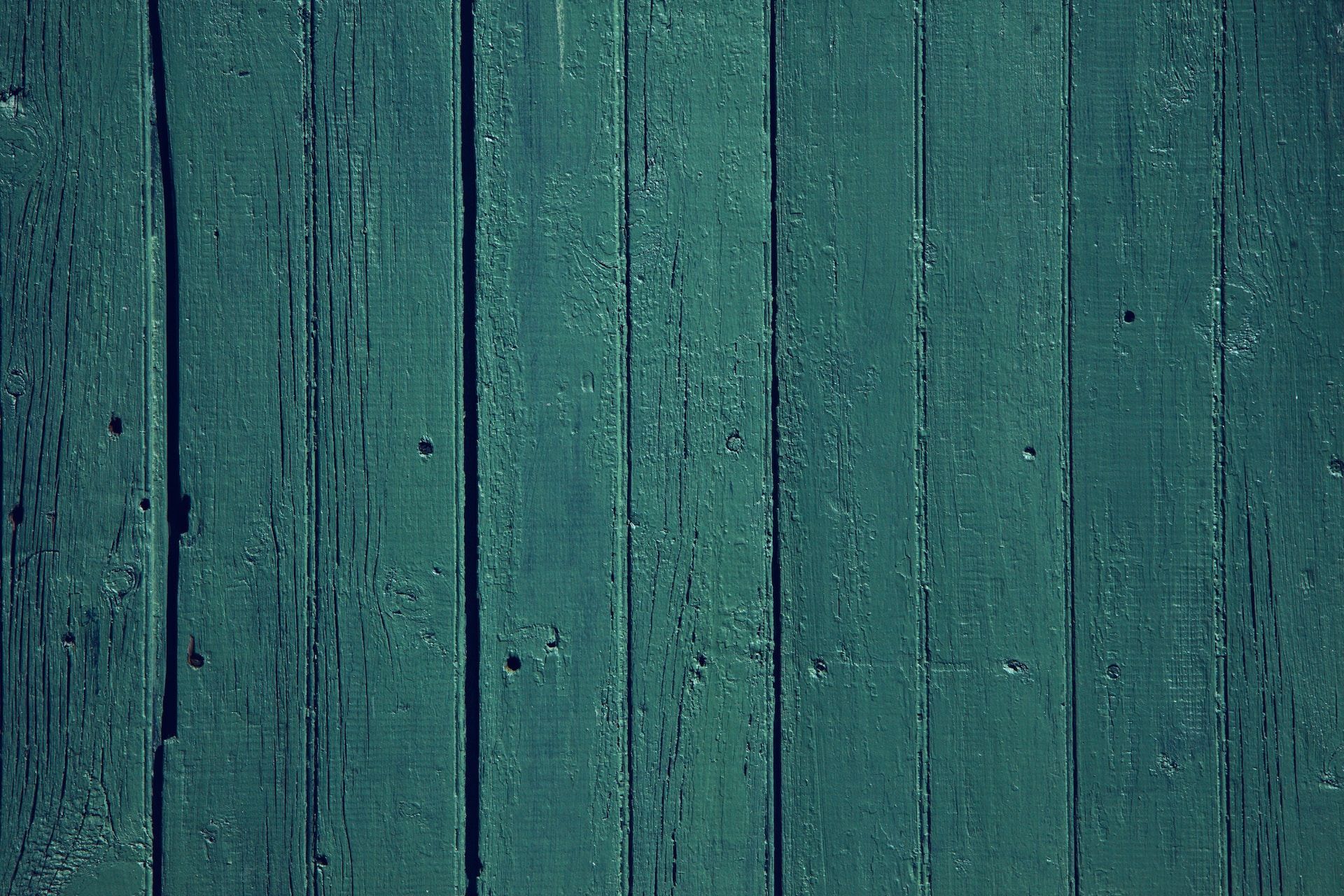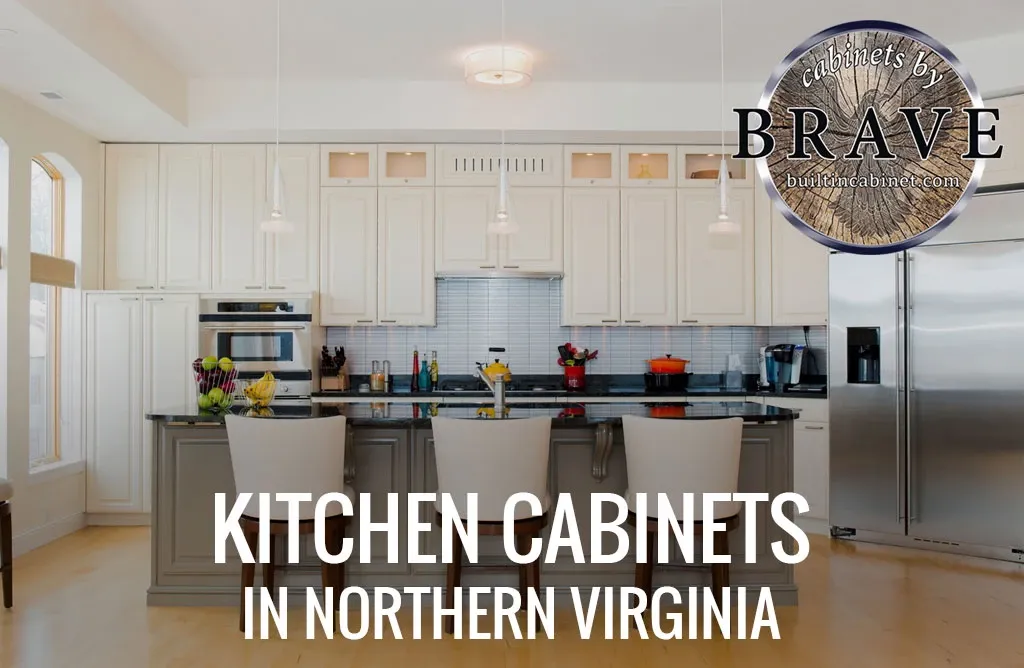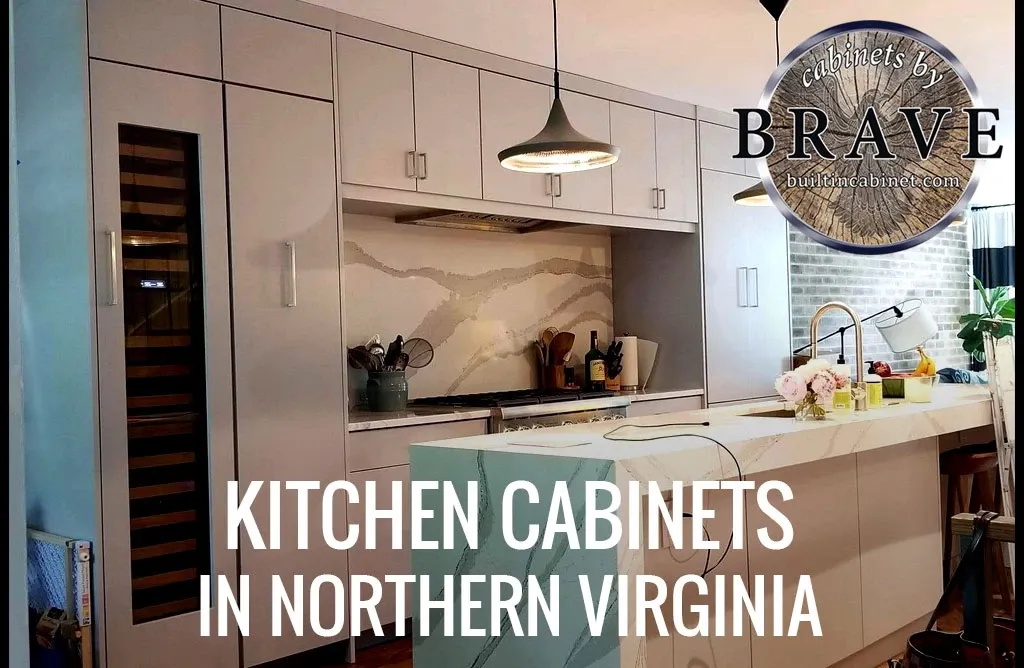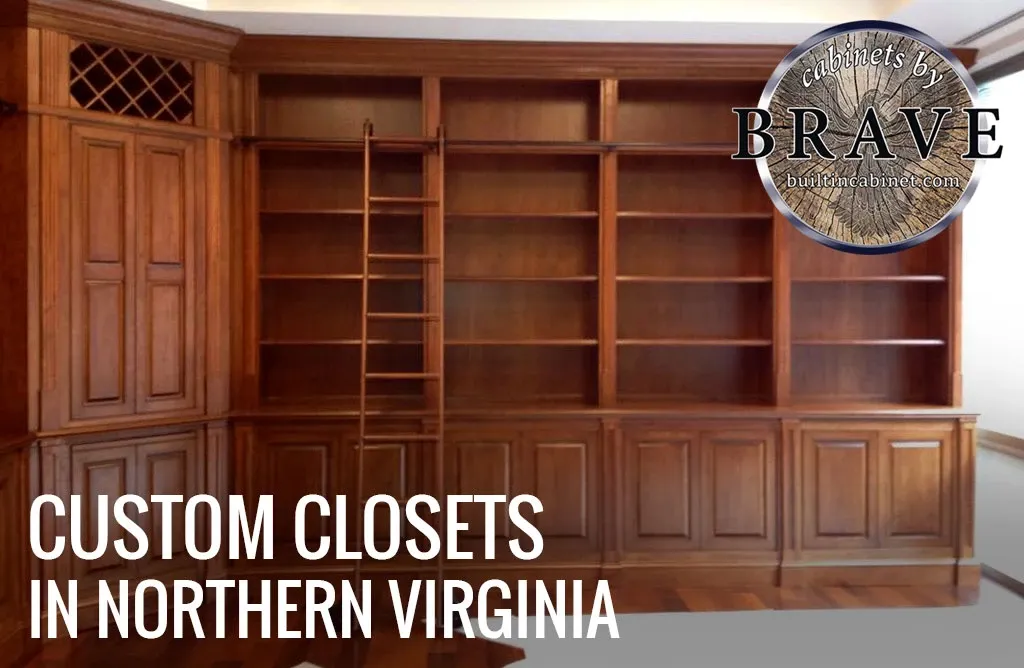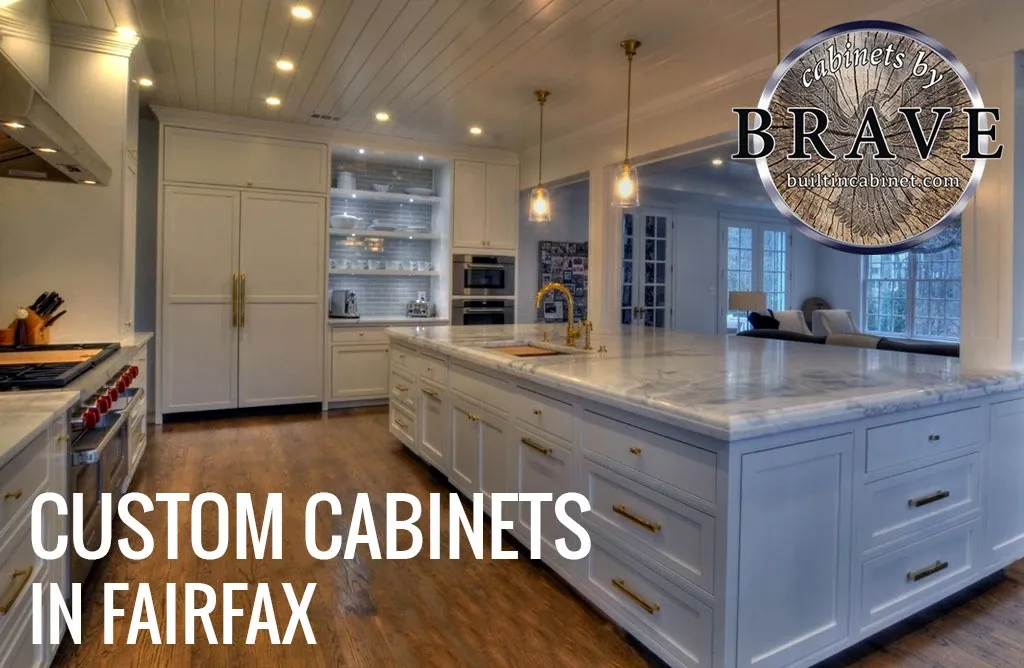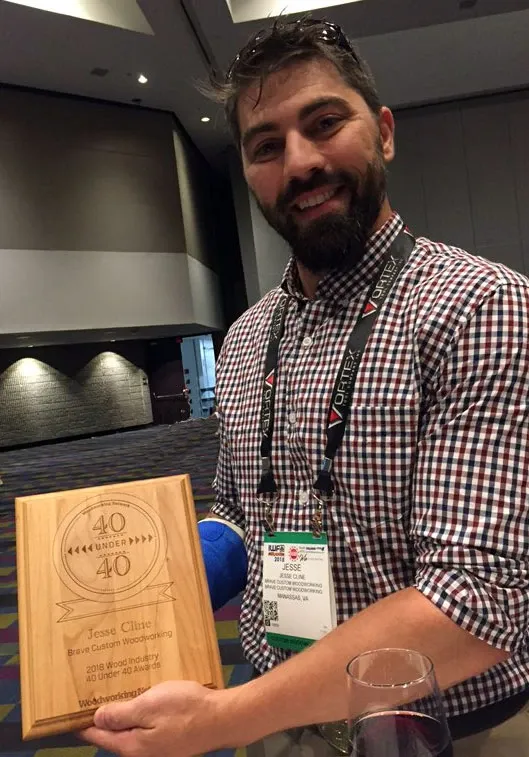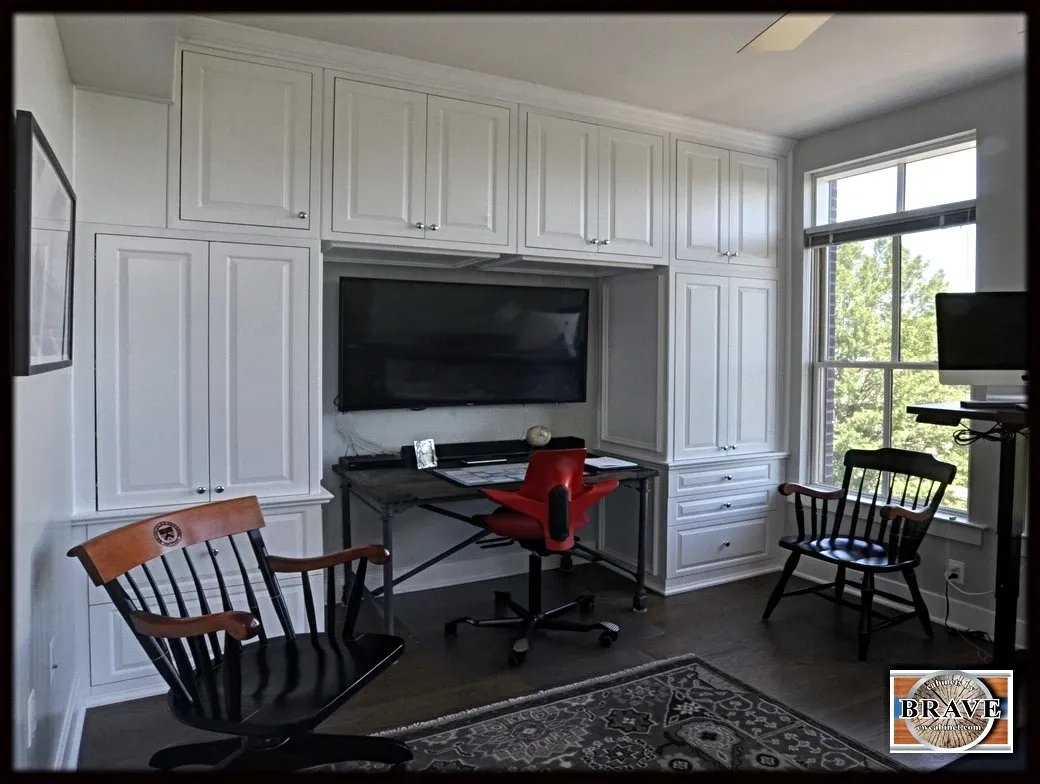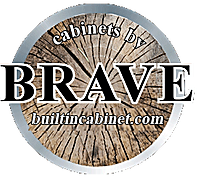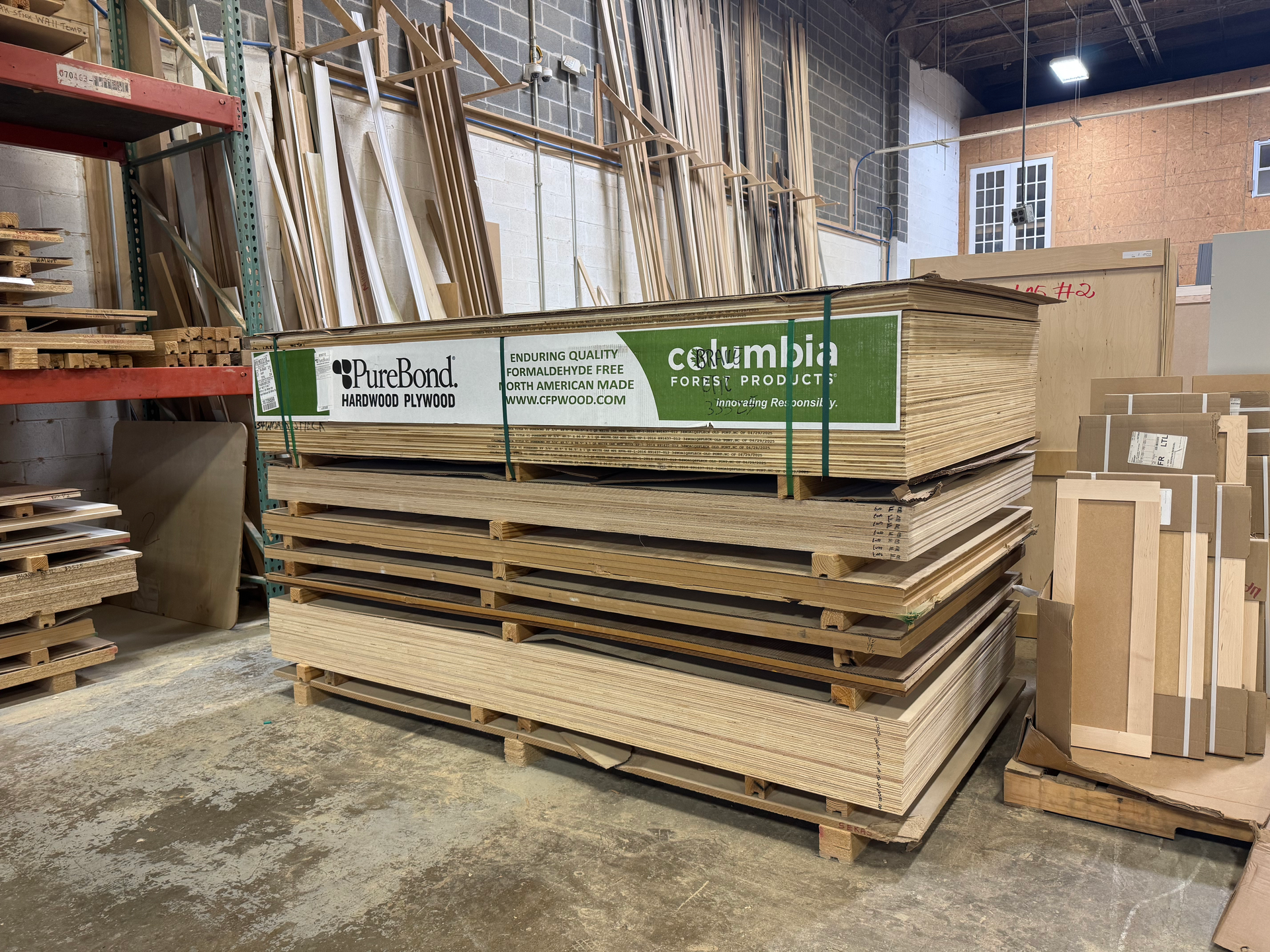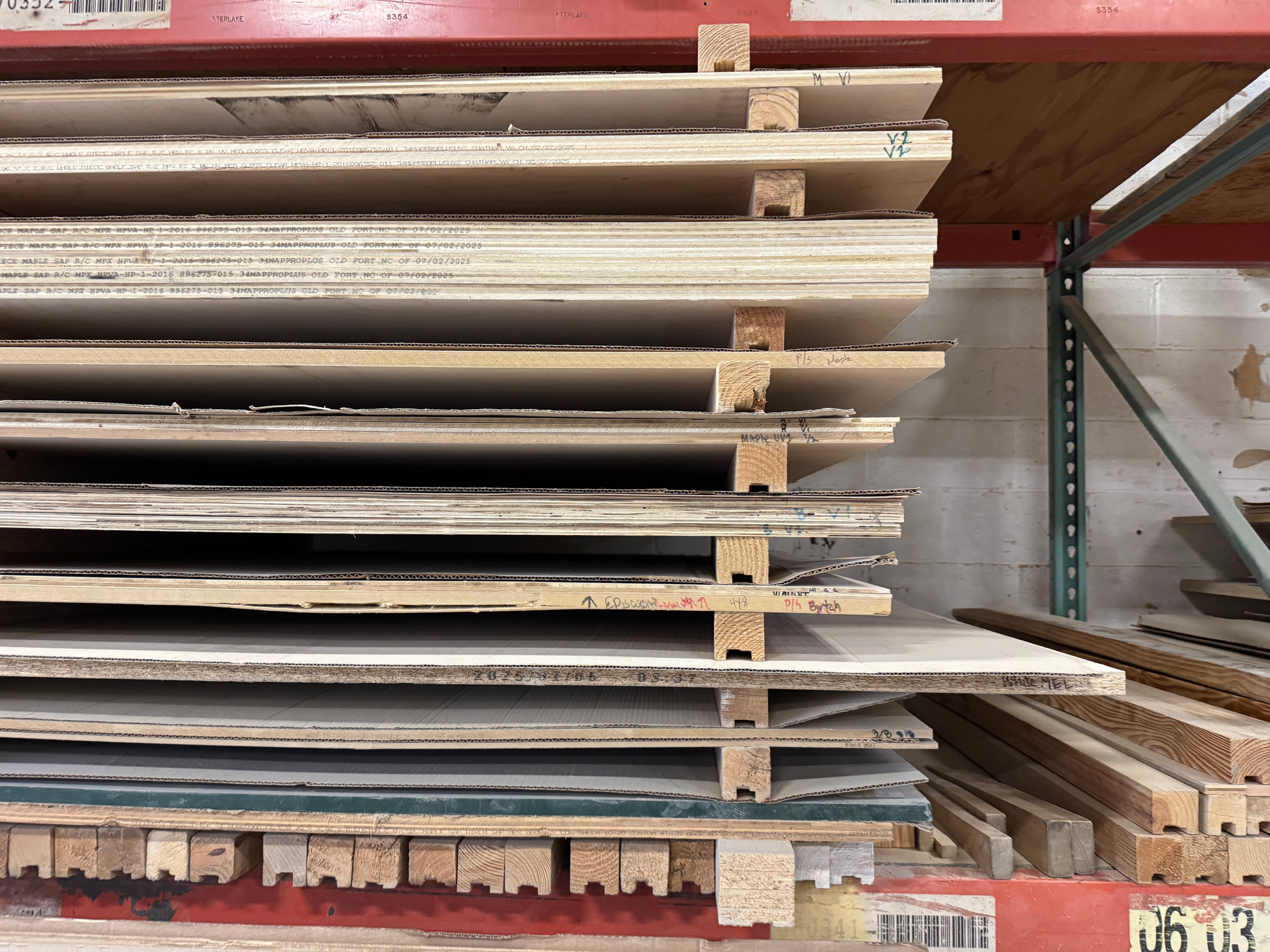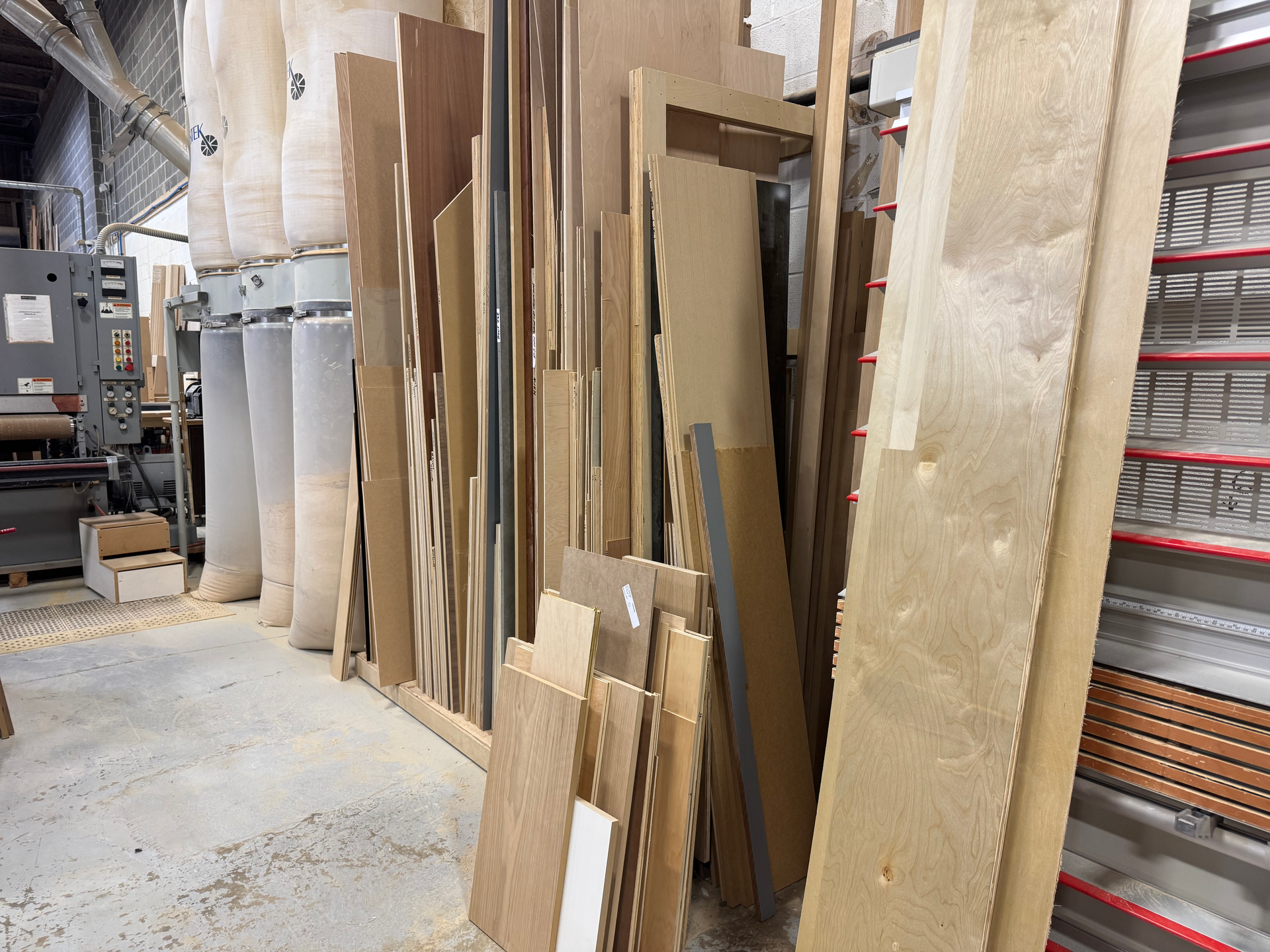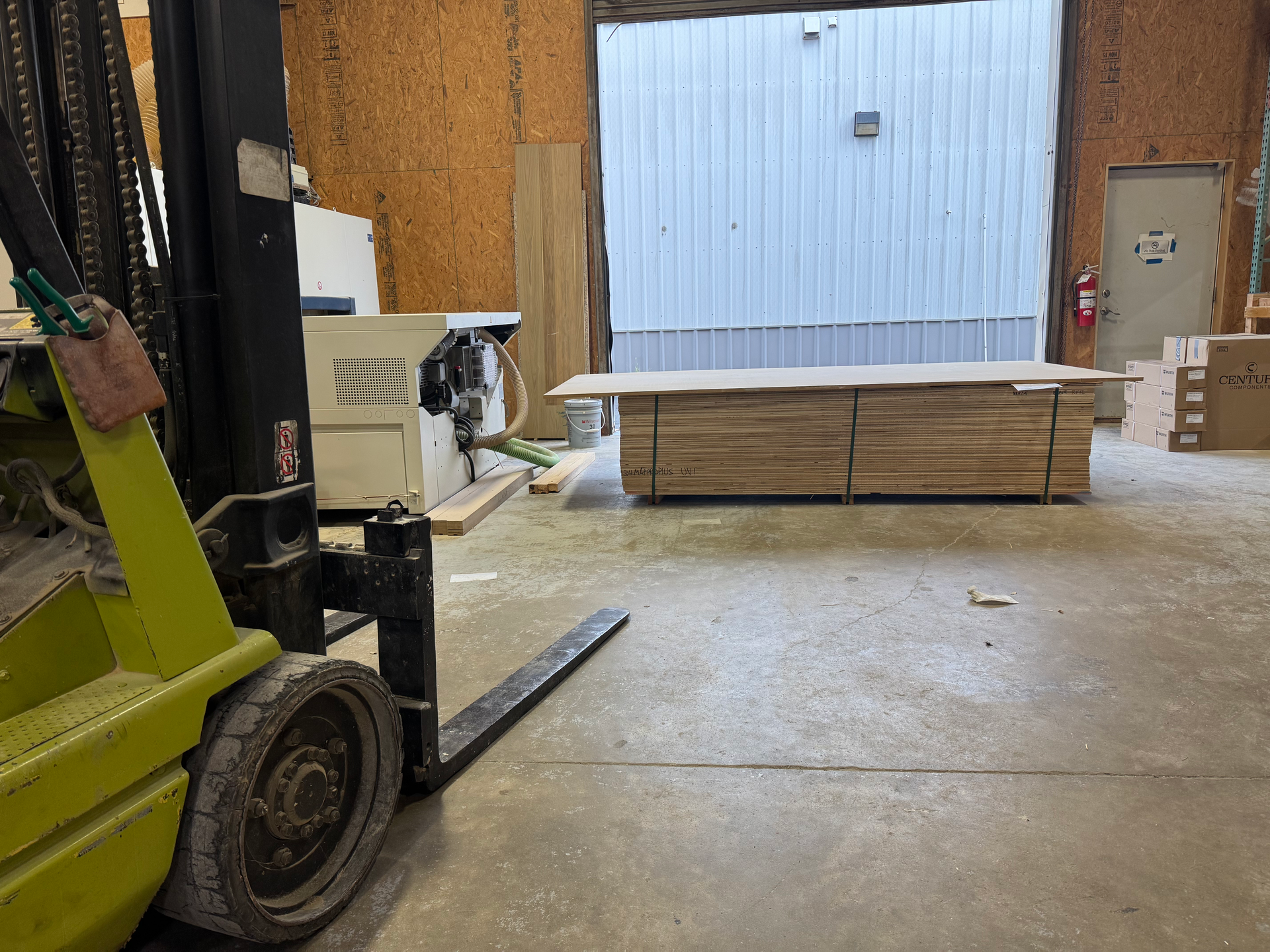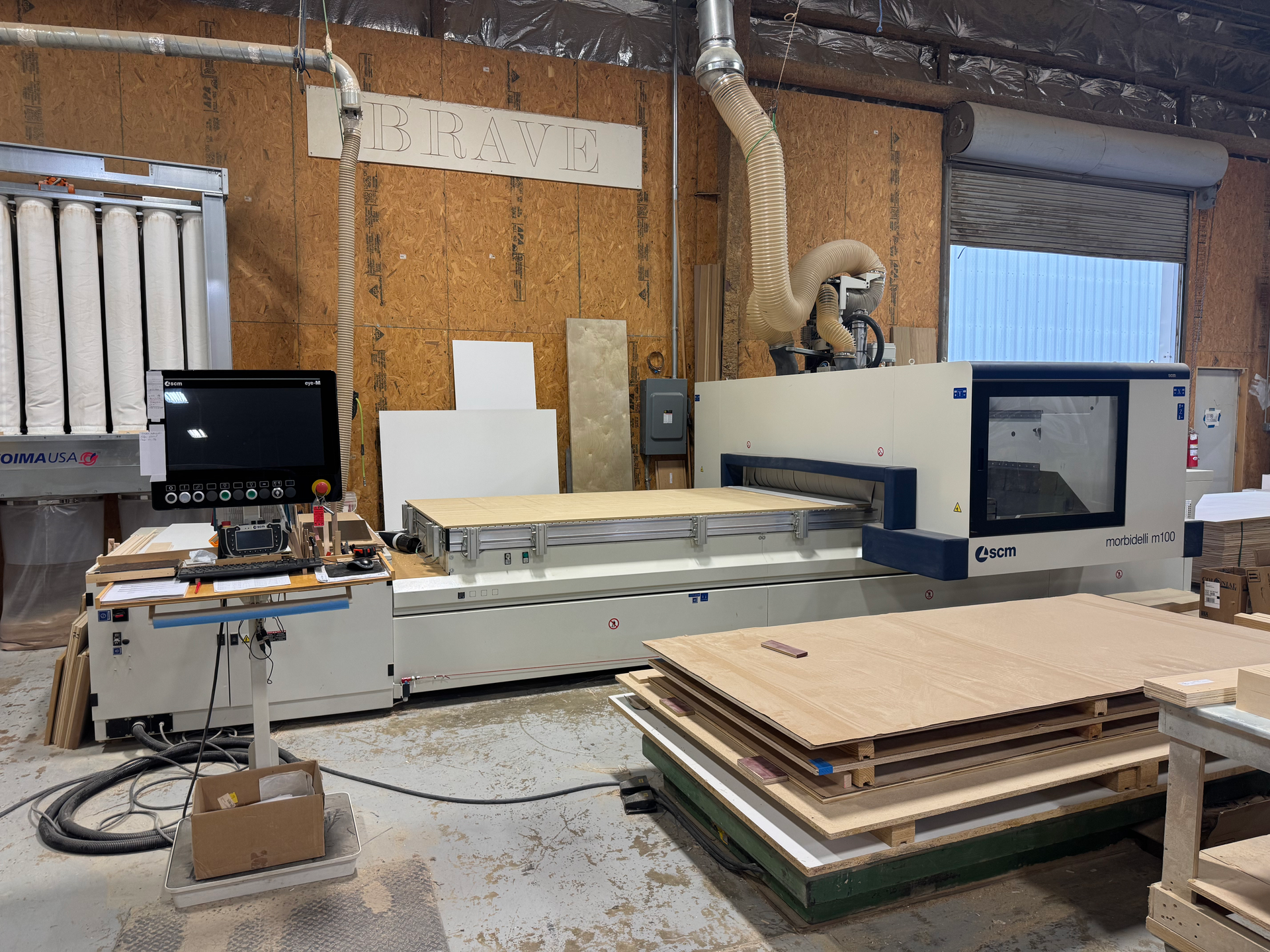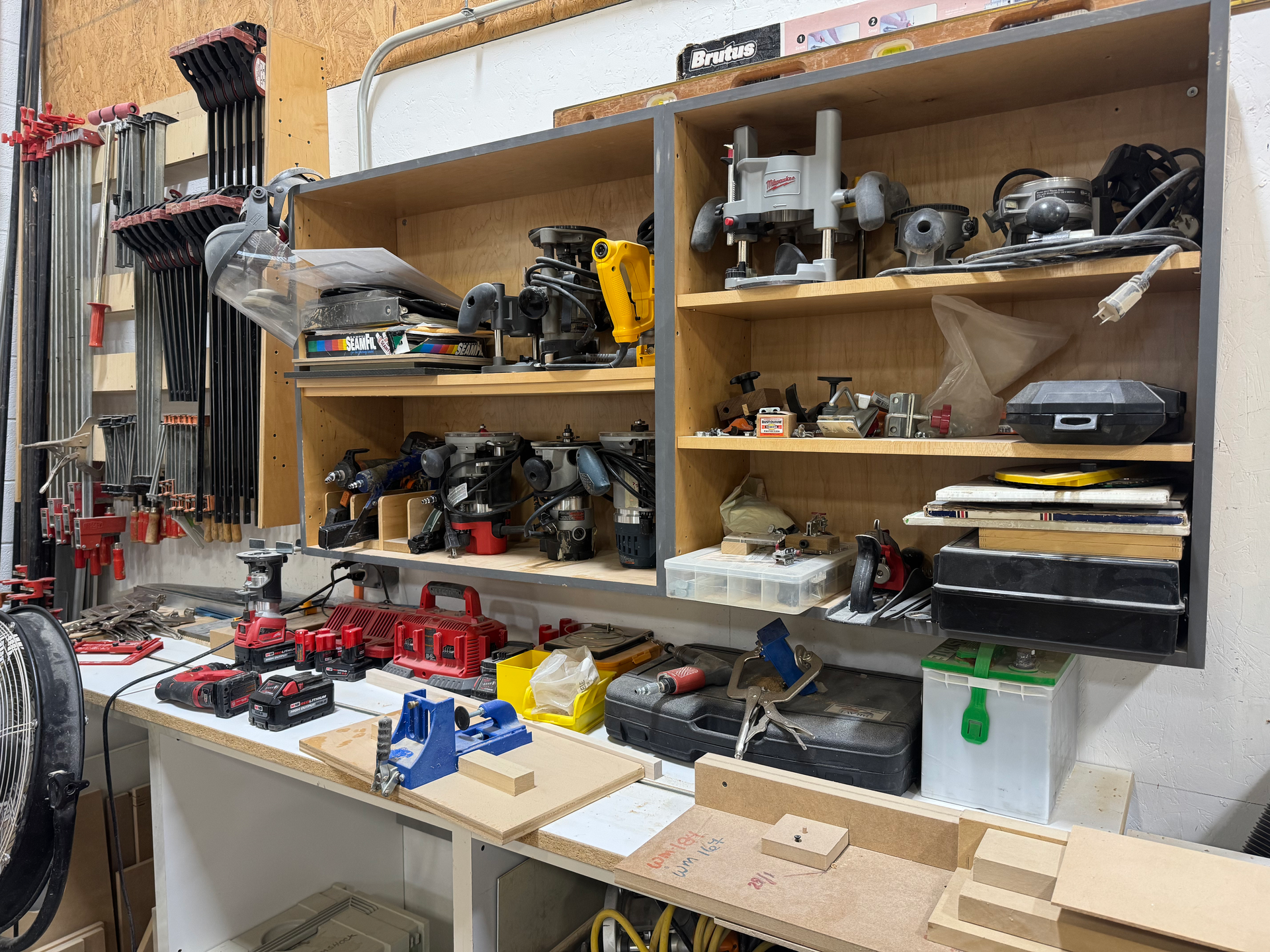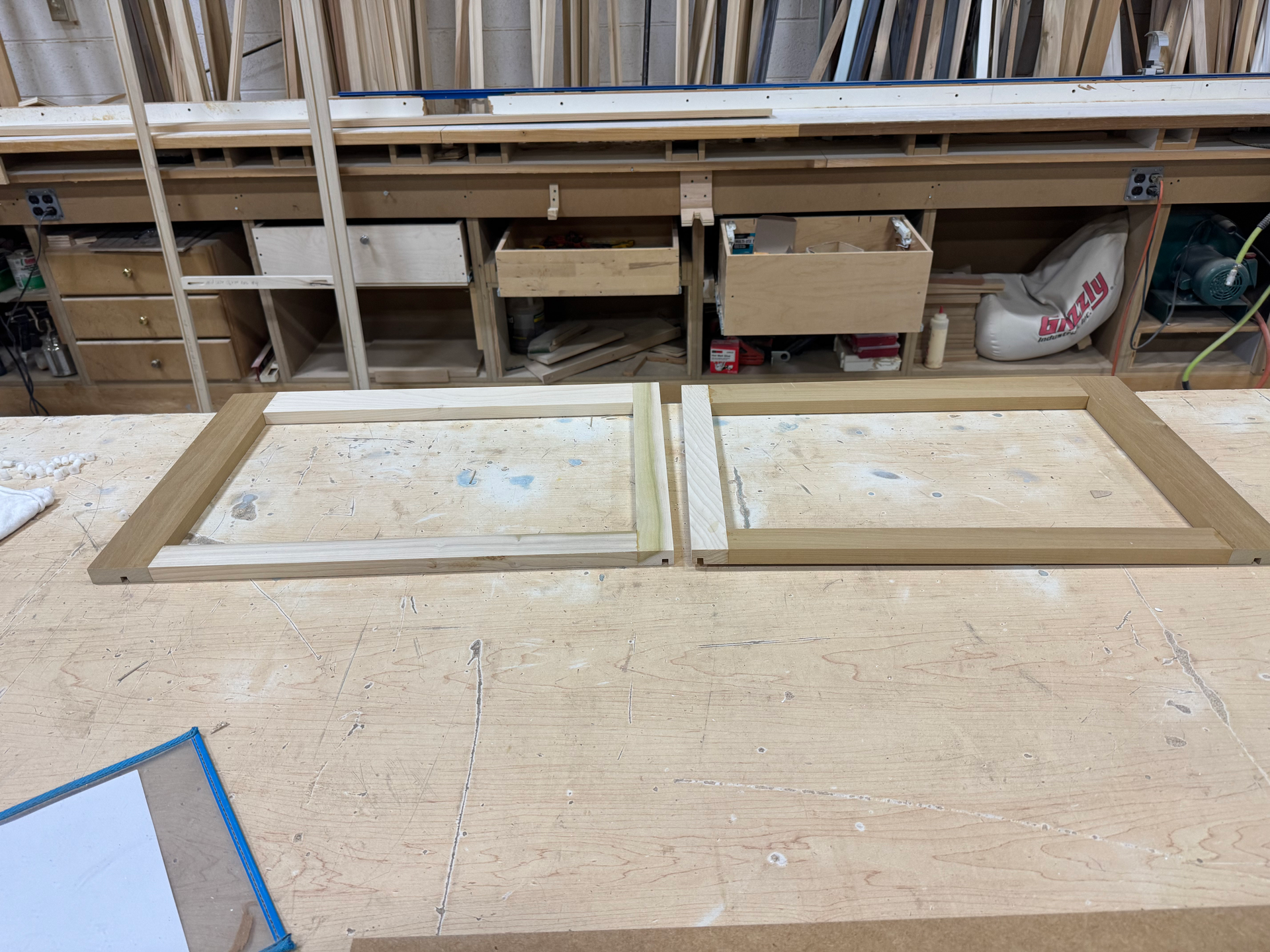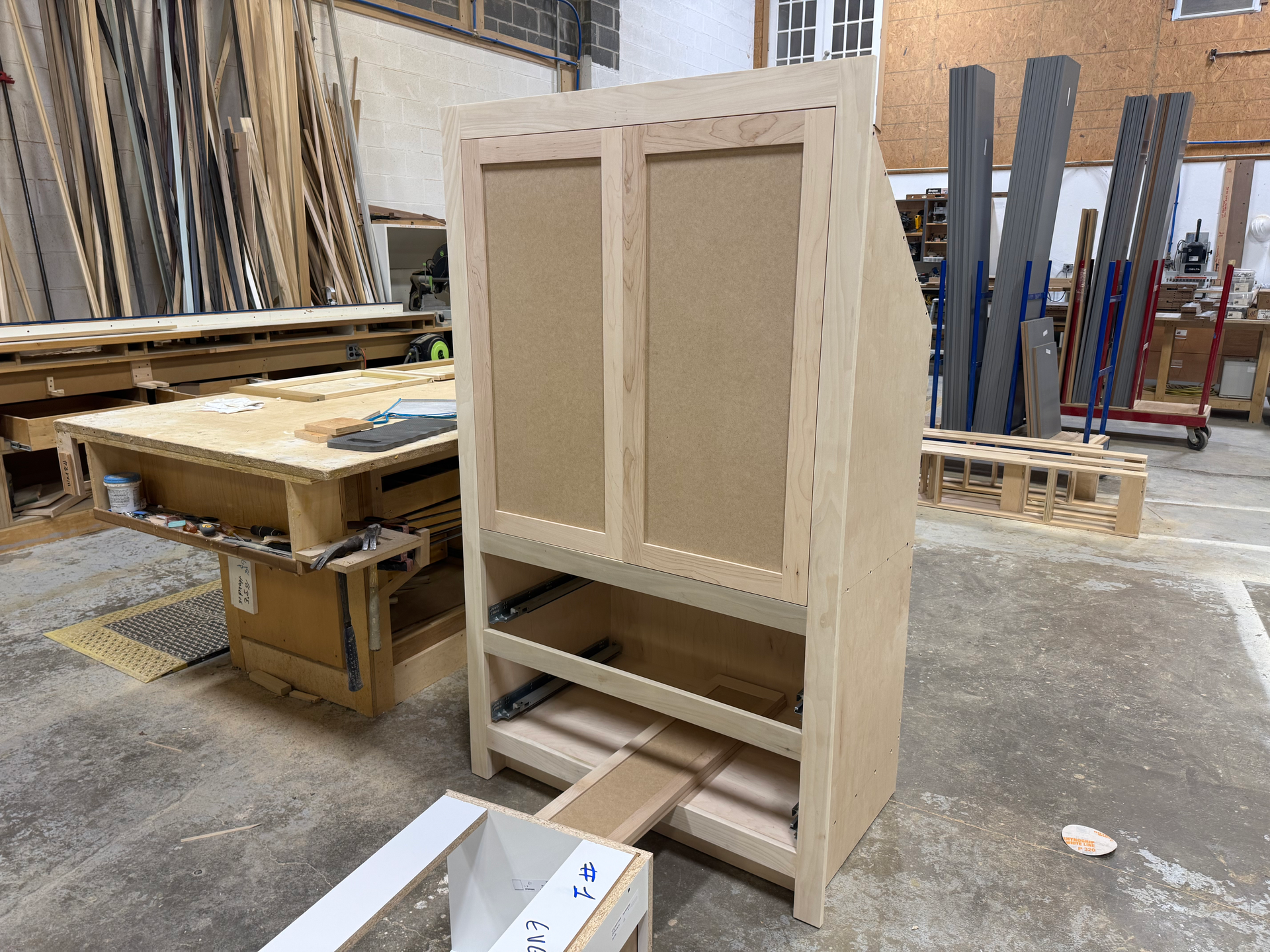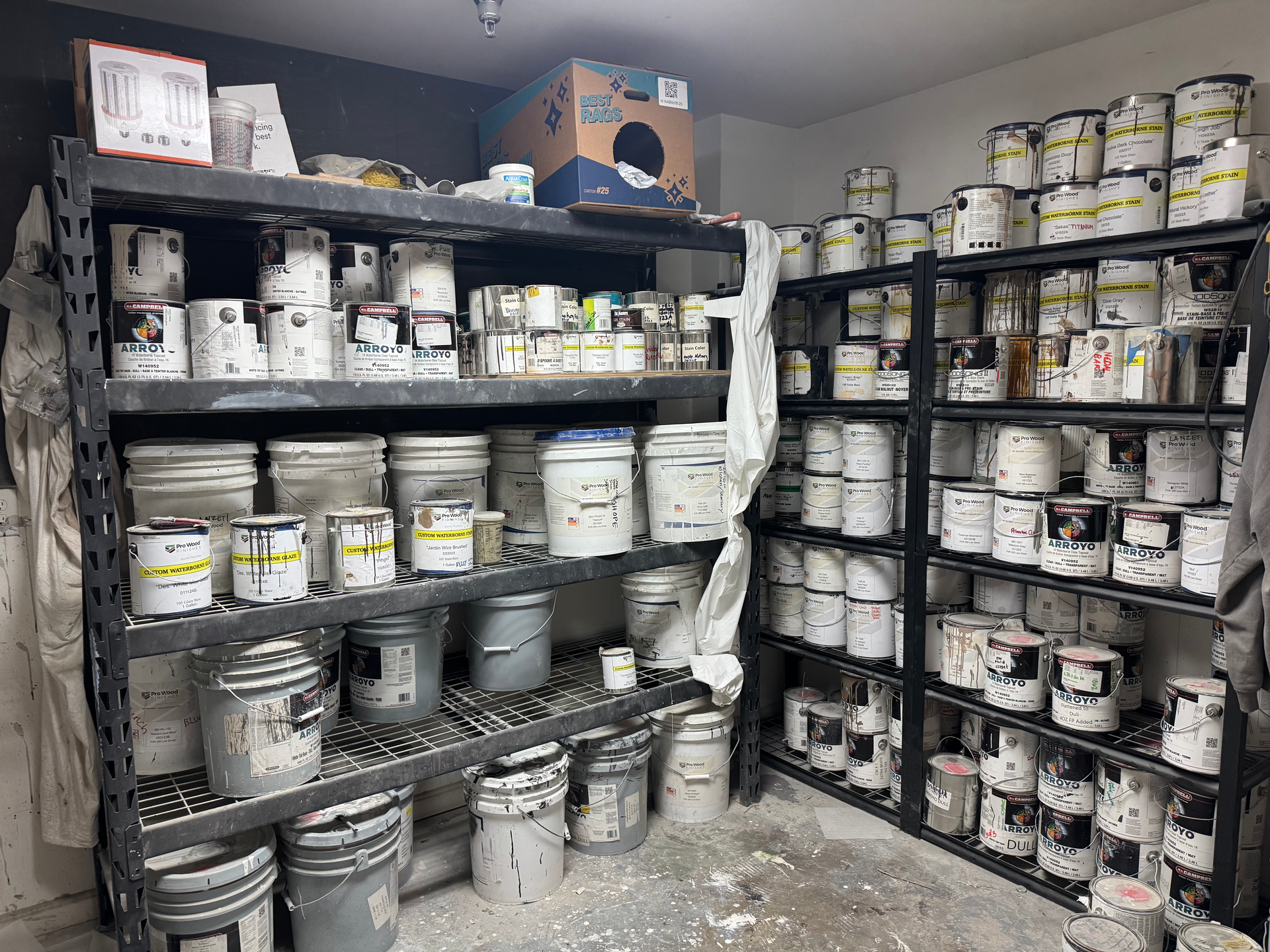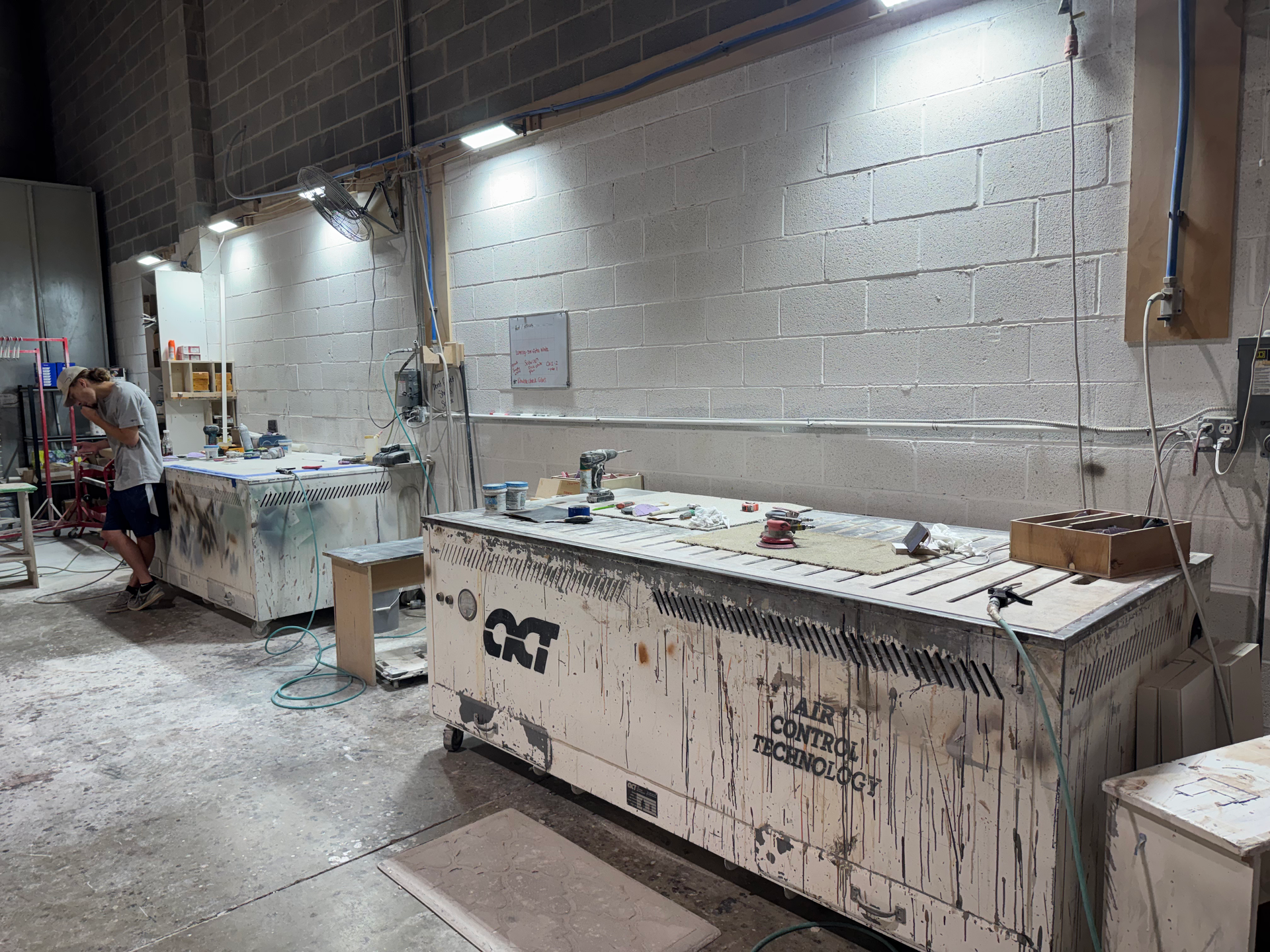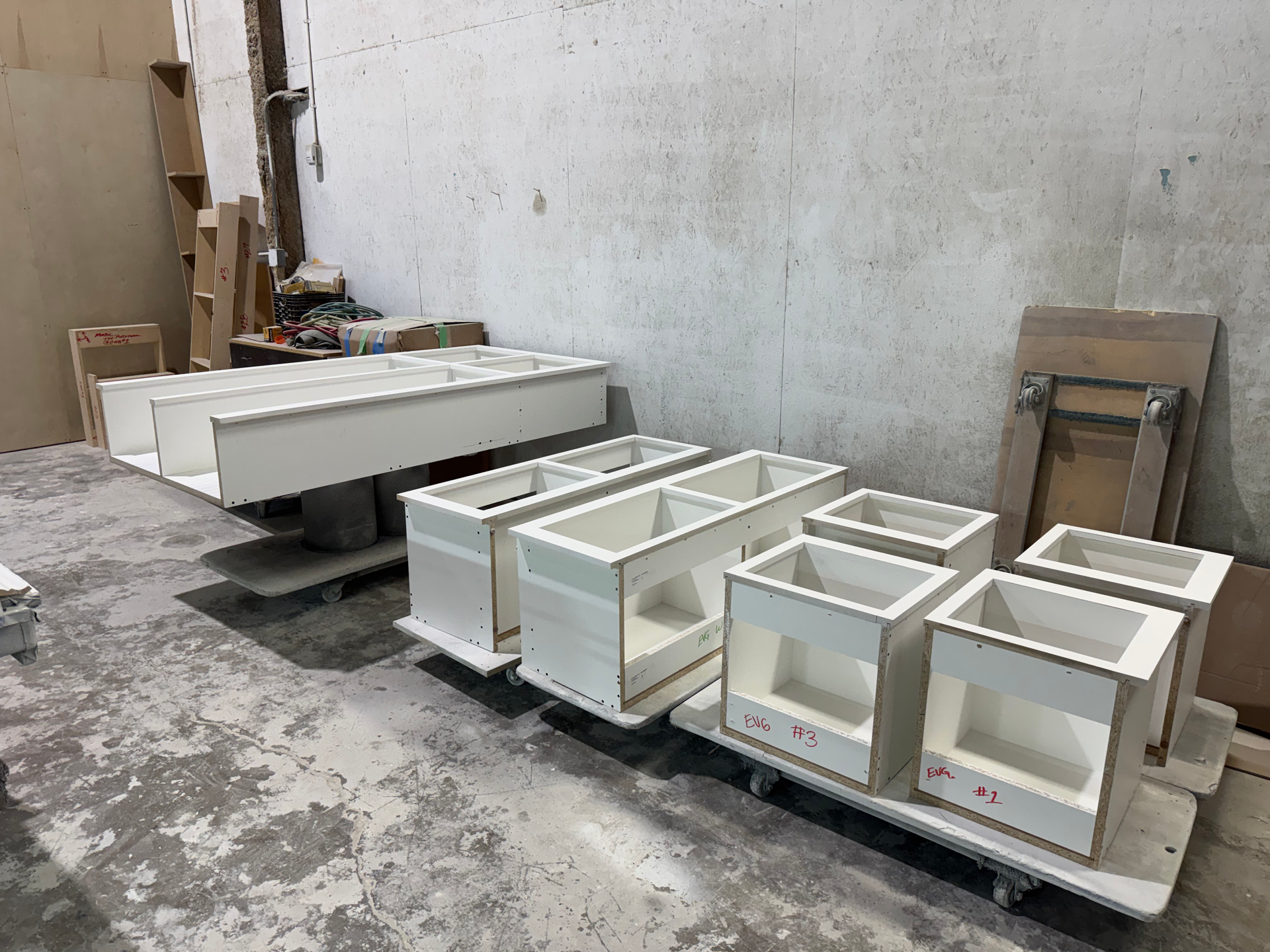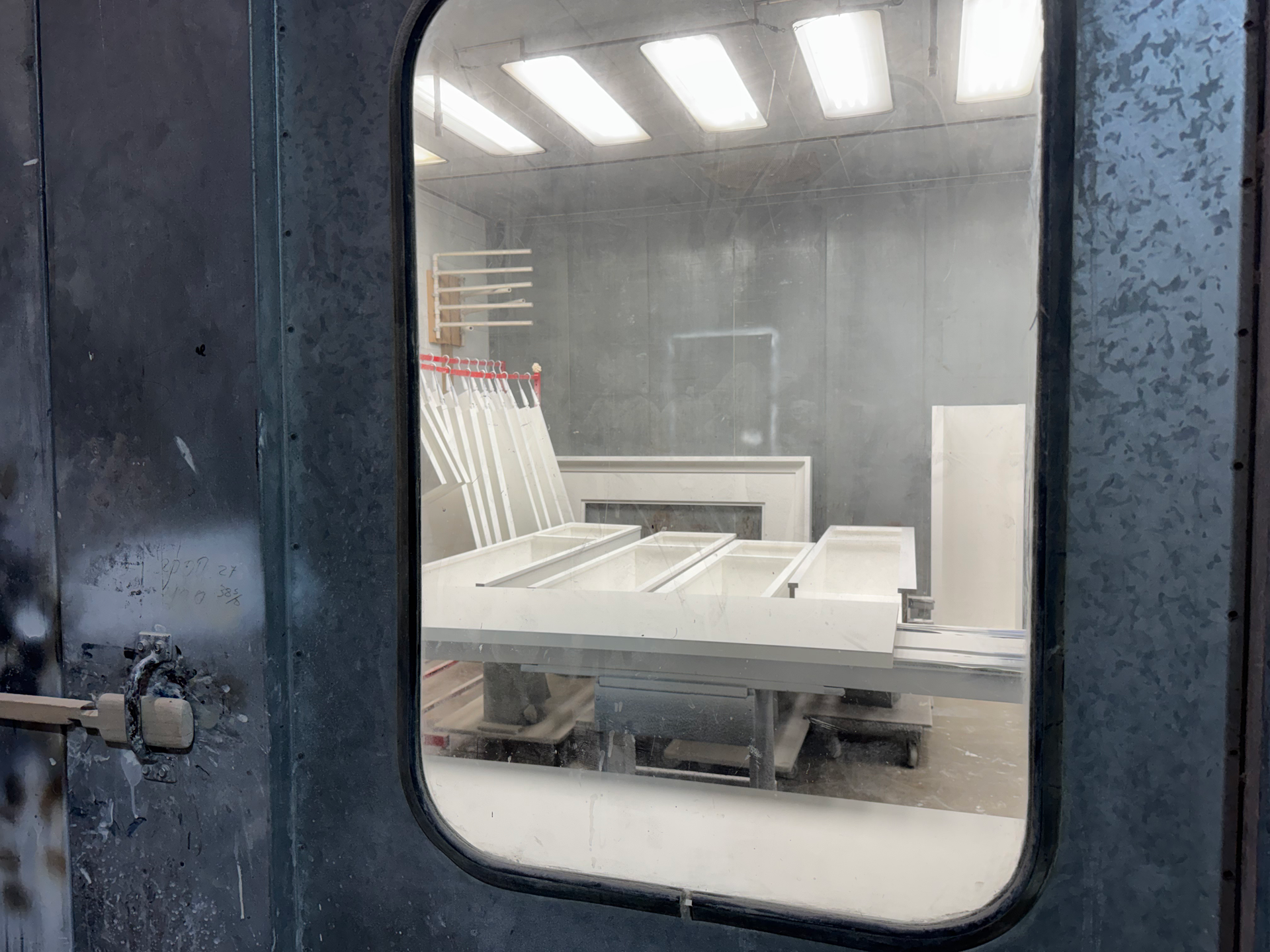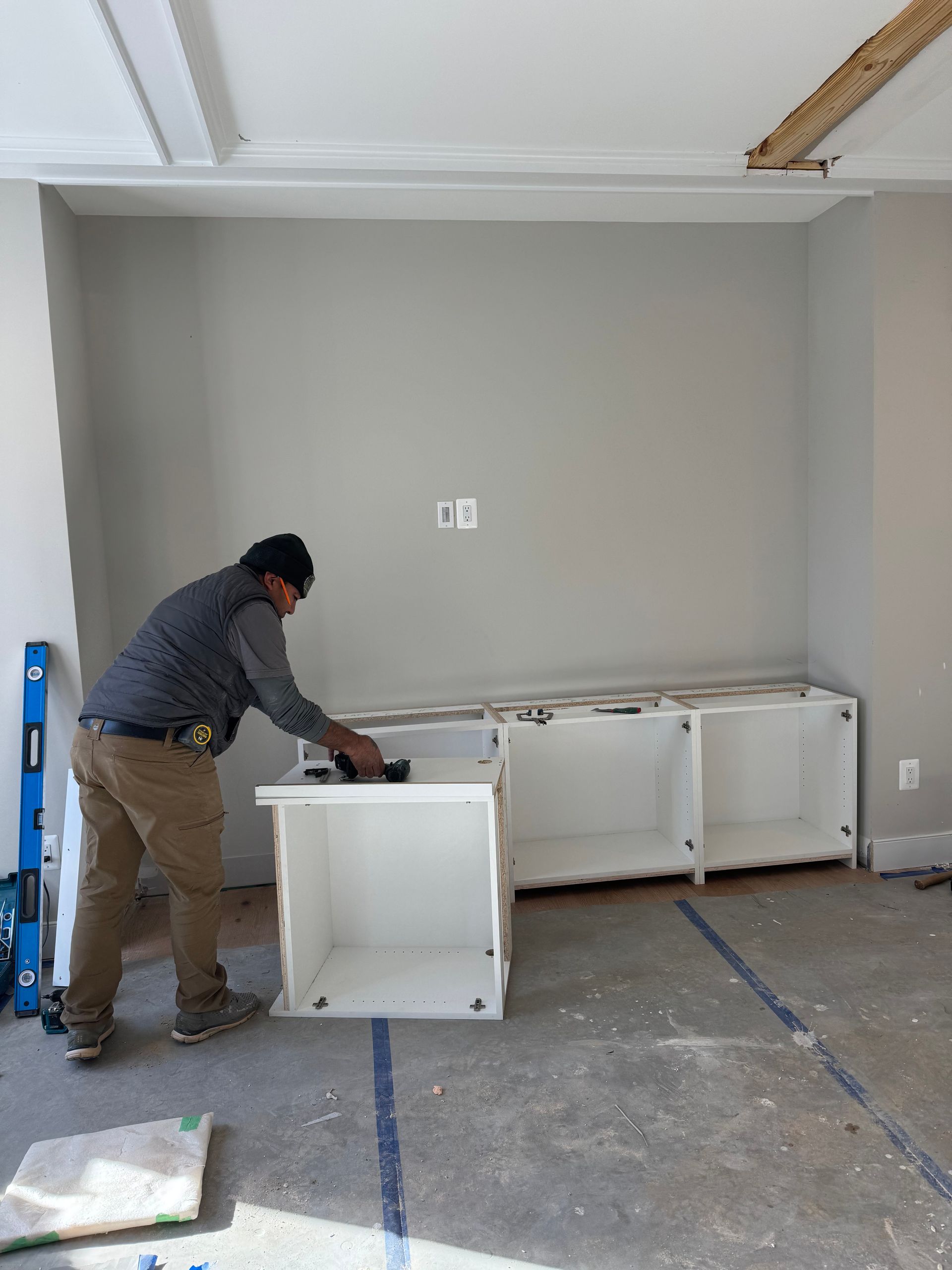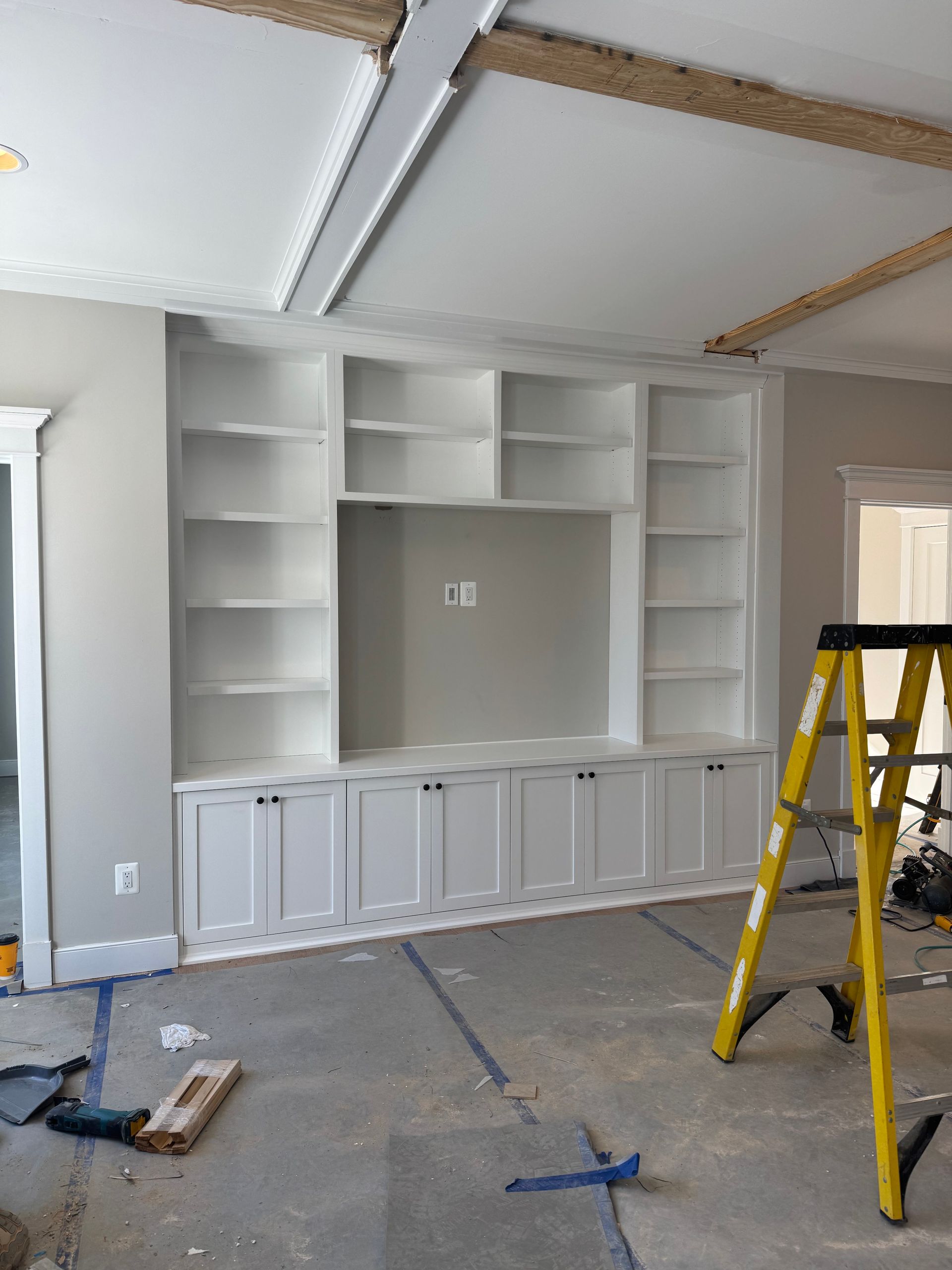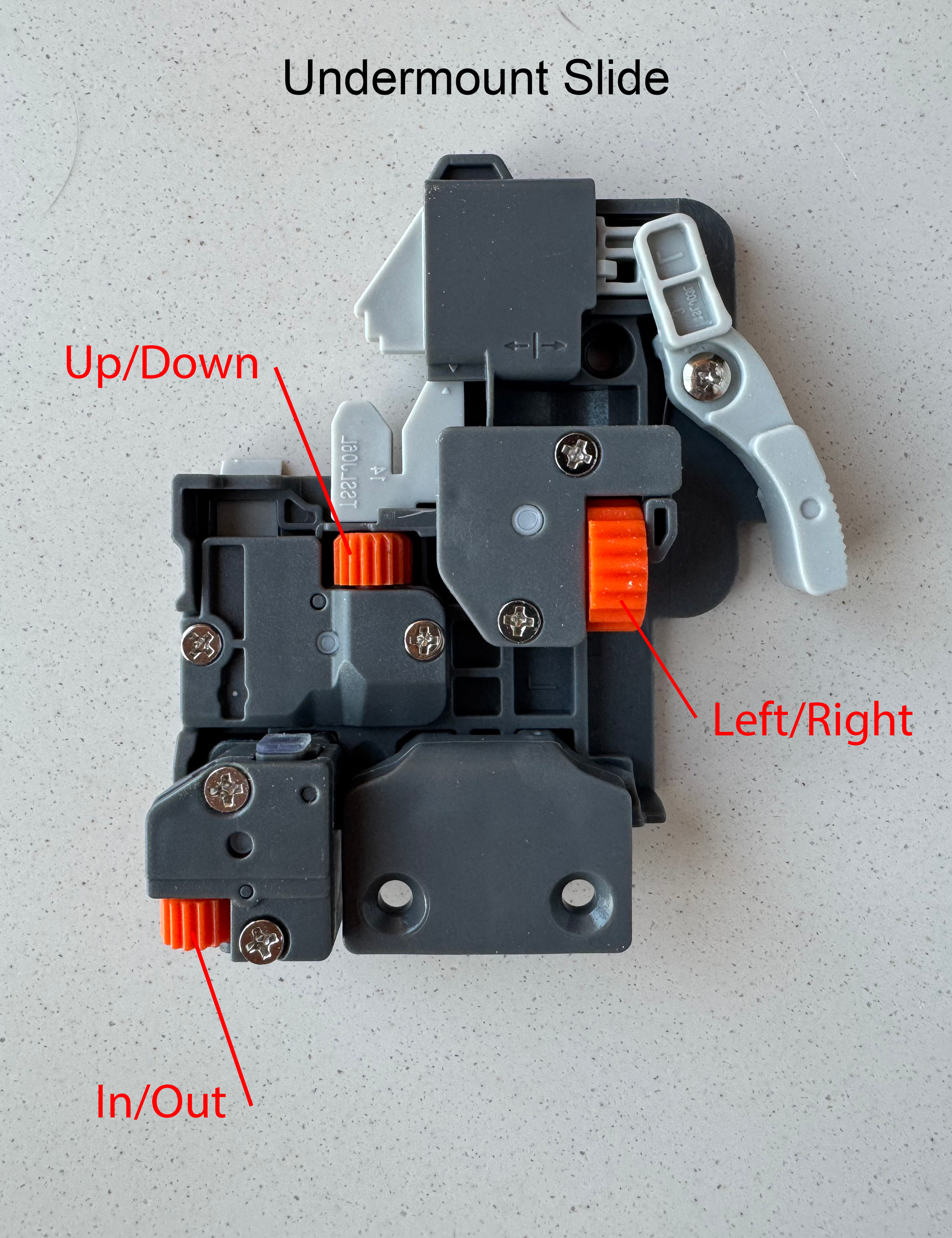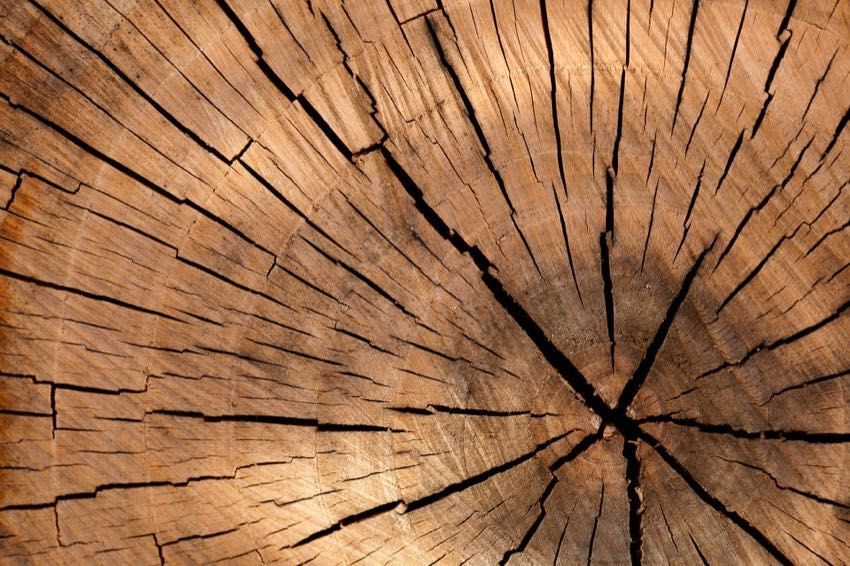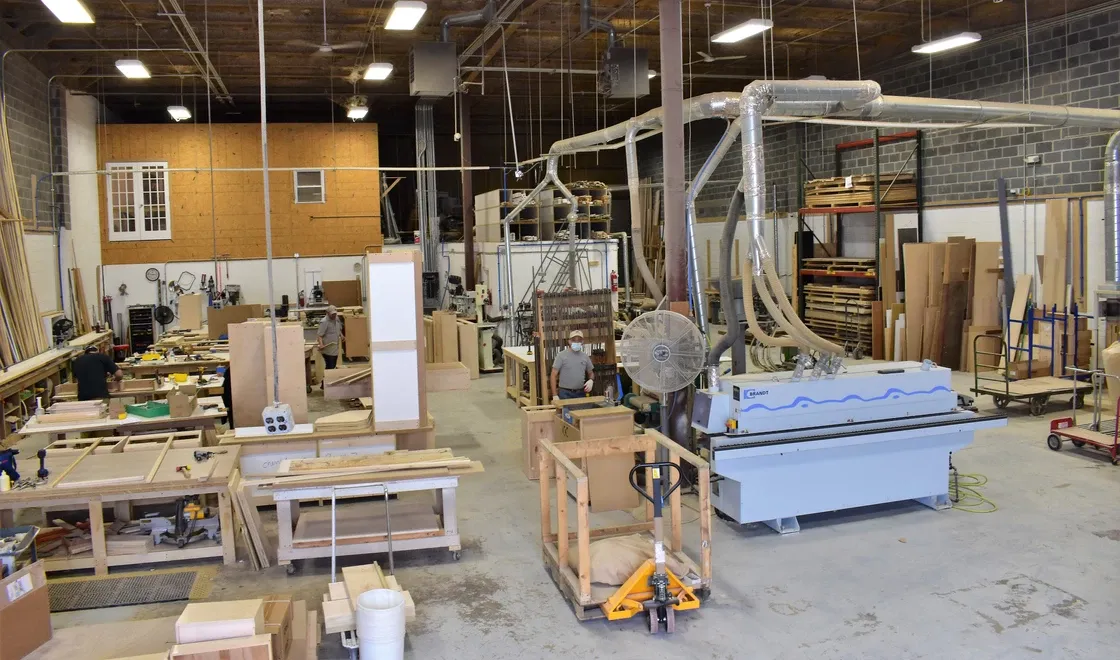Calculating the Cost: Why should i spend?
“But the ones at my local furniture store only costs half that!” This is a line that one hears all too often in our industry, and a completely understandable question as well given the current economy. When it comes to a quote for your kitchen, bathroom, or dining room remodel, it is very easy to look at the price and wonder if its really worth that. Often times it can even feel like an unnecessary luxury, or an overly expensive upgrade to more affordable store options. But it isn't some luxury price hike hiding behind the name and price tag, and in this blog post we will take you behind the scenes at our shop to ask our woodworking professionals to explain what goes into every step of the process, and why choosing custom cabinetry from Brave is a lasting investment you will never regret.
Wood selection and details
• What do we look for when selecting lumber or sheet goods for the project? - The wood is inspected for knots, splits, or warping. Higher grade wood tends to have less imperfections and a better overall appearance. For sheet goods such as plywood, instead of a solid wood, they are checked for flatness and an edge free of damage.
• In short terms, how would you describe the process for cutting the cabinet parts?
- After the project files have been signed off on, the CNC code is sent to our machine, where the sheet goods are cut into individual pieces. Larger or more unique pieces may be cut out by hand or using a large wall mounted saw. After the CNC is done cutting, each piece is individually labeled and placed in a group, and each part is verified to ensure it is the proper length, width, depth, and material requested.
• What are some challenges when working with different wood types or materials?
- Working with different wood types and materials like white oak, maple, birch, and melamine MDF each present different challenges. For example, white oak is hard and dense, which makes it very durable but also tougher on blades and harder to mill precisely. Maple is strong and smooth but can be prone to blotching when stained. Birch, while being the cheapest and easiest to work with, can have unpredictable grain patterns and color variation. Melamine MDF is great for modern, budget-conscious projects, but its edges chip easily when cutting, and it doesn’t hold screws as well as solid wood or plywood.
• Why do you believe using high quality materials is essential to the finished product?
- It ensures lasting durability, functionality, and a highly refined appearance. A good material is much less likely to warp or sag over time, which is extremely important here in the DMV where the high humidity is known to damage wood products. A higher quality material also takes paints and stains well, resulting in a much finer finish.
Assembly
• Which methods do we use that set our assemblies apart from mass-produced cabinets?
- Unlike a mass produced assembly cabinet, ours are carefully produced by hand by masters of the craft. Instead of just assembling the parts like a construction kit, they take the time to go over each individual part, ensuring the corners are square, the hinges are properly mounted, and that the drawers and doors actually fit. We assemble the cabinetry fully in the shop to ensure all the parts are there and that the cabinet can actually be built, before sending it off to be finished. A quality control check is also done to make sure nothing is missing. All it takes is one small error to throw off a job, and our assemblers are able to identify any, and fix them with professional ease.
• How do you ensure consistency and quality across different cabinet styles or sizes?
- We rely on precise measurements from the machining program, and keep templates in hand as well. Specs are checked and double checked against the client plans before the assembly even begins. After that, there is a sequence to be followed for every build, which ensure each cabinet gets the same amount of attention. If necessary, a part can be re cut by hand or machined again. The goal is to ensure all the cabinetry in a set match, and the style can be done again and again.
Finishing
• What steps do you take to ensure a smooth, even, and durable finish? - Preparation is key to making the finish really "pop." To ensure every finish is smooth, even, and durable, we follow a process that starts with thorough surface preparation so the wood is perfectly clean and ready to take finish. This preparation involves cleaning the pieces off, and lightly sanding them to remove all imperfections and to give the paint some texture to adhere to. From there, we apply the stain or paint in even layers, sanding the layers lightly to keep everything consistent and silky smooth. Finally, we build up protective topcoats that not only bring out the depth and richness of the look, but also seal and strengthen the surface for long lasting durability. The result is a flawless finish that will last for a long time and while be able to endure all manner of scratches and bumps.
• How does our finishing process differ from standard or automated finishing? - The difference between our processes and automated or standard cabinet finishing comes down to
control and artistry. Automated systems spray on a factory finish faster, but it’s usually a one size fits all approach with minimal attention to wood variation, color matching, or special details. Standard finishing on big box store cabinets often uses thinner coatings, limited color options, and prioritizes speed over precision, which is vital in custom cabinetry work. By contrast, a hand applied custom finish gives us full control, we can adjust the technique, pressure, and even layering to even out wood grain variations, achieve an exact color match, and then build up a finish that has real depth and lasting durability. Factory methods produce an acceptable look on acceptable cabinets, but the custom finishing done in shop creates a surface that looks richer, feels smoother, and holds up far better.
Installation
• What’s unique about installing our custom cabinets compared to standard cabinets?
- It's the level of precision and care we put into the process that truly sets us apart. We don’t just set the cabinets against the wall, we carefully scribe, level, and anchor each piece so it fits seamlessly into the space even if the walls or floors aren’t perfectly straight, which they rarely are. We take the time and effort to trim on site so the cabinets look like a natural part of the home’s architecture. The attention to detail during installation is what ensures the final product feels solid, functions flawlessly, and looks truly built in rather than just added on.
• How do you handle challenges like uneven walls, tight spaces, or special design details?
- For these types of challenges, we lean on our years of experience with precision craftsmanship. For uneven walls or floors, we’ll very carefully scribe and shim the cabinetry so everything sits perfectly level and flush. In tight spaces, we measure meticulously and build pieces with enough space to ensure they slide in without forcing. For special design details, whether it’s custom trim, hidden panels, or matching existing millwork, we take the time to fine tune the fit so the finished product looks intentional and seamless. These adjustments are where a custom install really shows compared to your typical standard cabinetry, because we can adapt the cabinets to the home instead of forcing the home to adapt to the cabinets!
Installation of a media center
So there you have it! At the end of the day, custom cabinetry’s value goes far beyond just good looking wood products, they are smart investments made into your home’s comfort, style, and even potential value!
